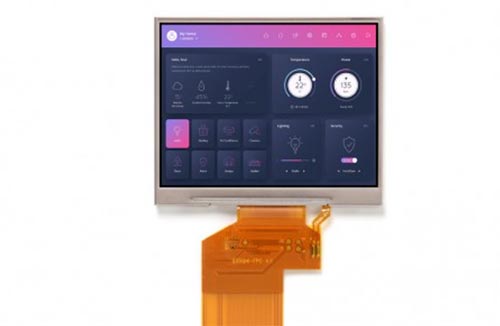What is the difference between AMOLED and TFT display?
Views: 562 Update date: Aug 13,2024
When choosing a display for a device, two of the most common technologies are AMOLED (Active Matrix Organic Light Emitting Diode) and TFT (Thin Film Transistor). Both have unique features, benefits, and drawbacks. Here's a breakdown to help you understand the key differences:
AMOLED displays are made up of organic compounds that emit light when an electric current is applied. Each pixel in an AMOLED screen is individually lit, allowing for true blacks and more vibrant colors.
The "Active Matrix" refers to the control mechanism for the pixels, which allows for quicker response times and more efficient energy usage.
TFT:
TFT is a type of LCD (Liquid Crystal Display) technology. It uses transistors to control individual pixels, but unlike AMOLED, it relies on a backlight to illuminate the display.
The light passes through layers of liquid crystals to create images, resulting in less vibrant colors and deeper blacks compared to AMOLED.
Known for its rich colors and high contrast ratios. Because each pixel can be turned off completely, AMOLED displays can achieve true blacks, making colors appear more vivid.
TFT:
Colors on a TFT display are generally less vibrant, and the contrast ratio is lower compared to AMOLED. Blacks may appear more like dark gray due to the backlighting.
More power-efficient for displaying darker images, as black pixels consume no power. However, bright images or high brightness settings can lead to higher power consumption.
TFT:
Offers wider viewing angles with minimal color distortion or brightness loss when viewed from the side.
TFT:
Viewing angles are more limited, with noticeable color and brightness shifts when the screen is viewed from an angle.
AMOLED displays can suffer from burn-in, where static images can leave a permanent mark on the screen over time. However, the technology has improved, reducing the likelihood of this issue in modern displays.
TFT:
Generally more durable in terms of avoiding screen burn-in, but the lifespan can be affected by the backlight's longevity.
Typically more expensive due to the complexity of the manufacturing process and the superior display quality.
TFT:
More cost-effective, making it a popular choice for budget devices.
Conclusion
The choice between AMOLED and TFT displays often comes down to the intended use and budget. AMOLED displays are ideal for users who prioritize vibrant colors, deep blacks, and energy efficiency for darker content. TFT displays, while less visually striking, offer durability and are often found in more affordable devices. Understanding these differences can help you make a more informed decision based on your specific needs and preferences.
1. Technology and Structure
AMOLED:AMOLED displays are made up of organic compounds that emit light when an electric current is applied. Each pixel in an AMOLED screen is individually lit, allowing for true blacks and more vibrant colors.
The "Active Matrix" refers to the control mechanism for the pixels, which allows for quicker response times and more efficient energy usage.
TFT:
TFT is a type of LCD (Liquid Crystal Display) technology. It uses transistors to control individual pixels, but unlike AMOLED, it relies on a backlight to illuminate the display.
The light passes through layers of liquid crystals to create images, resulting in less vibrant colors and deeper blacks compared to AMOLED.
2. Color and Contrast
AMOLED:Known for its rich colors and high contrast ratios. Because each pixel can be turned off completely, AMOLED displays can achieve true blacks, making colors appear more vivid.
TFT:
Colors on a TFT display are generally less vibrant, and the contrast ratio is lower compared to AMOLED. Blacks may appear more like dark gray due to the backlighting.
3. Power Consumption
AMOLED:More power-efficient for displaying darker images, as black pixels consume no power. However, bright images or high brightness settings can lead to higher power consumption.
TFT:
Consumes more power overall because the backlight is always on, regardless of what is being displayed on the screen.
4. Viewing Angles
AMOLED:Offers wider viewing angles with minimal color distortion or brightness loss when viewed from the side.
TFT:
Viewing angles are more limited, with noticeable color and brightness shifts when the screen is viewed from an angle.
5. Lifespan and Durability
AMOLED:AMOLED displays can suffer from burn-in, where static images can leave a permanent mark on the screen over time. However, the technology has improved, reducing the likelihood of this issue in modern displays.
TFT:
Generally more durable in terms of avoiding screen burn-in, but the lifespan can be affected by the backlight's longevity.
6. Cost
AMOLED:Typically more expensive due to the complexity of the manufacturing process and the superior display quality.
TFT:
More cost-effective, making it a popular choice for budget devices.
Conclusion
The choice between AMOLED and TFT displays often comes down to the intended use and budget. AMOLED displays are ideal for users who prioritize vibrant colors, deep blacks, and energy efficiency for darker content. TFT displays, while less visually striking, offer durability and are often found in more affordable devices. Understanding these differences can help you make a more informed decision based on your specific needs and preferences.




